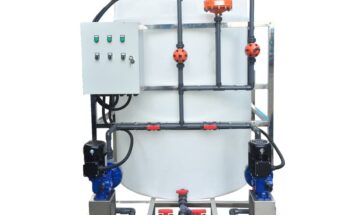If you don’t farm for a living, you might believe growing food is pretty simple. You plow a field, plant seeds, and hope for the right amount of rain and sunshine.
Pretty soon, green plants are shooting up through the dirt, and in a few months, it’s time to harvest a crop of corn, beans, wheat, or garden veggies.
In fact, farming must be a scientific enterprise to accommodate the reliance we all have on our domestic and foreign crops. With our growing population, feeding the world sustainably and efficiently is an increasingly challenging job.
Precision Farming incorporates heavy doses of technology in farming. Today, we have high-tech tools to optimize natural and manufactured resources for the highest yields and lowest environmental impact.
Farmers who want to keep farming must stay abreast of the latest tech for several reasons. The most important of which is ensuring our environment remains a friendly place to grow our food.
What is Precision Farming?
Farming is no longer the guessing game it was before the advent of our current tech culture. Precision farming utilizes software and other tools to gather data and make seasonal environmental predictions for precise sections of land.
Some of the tools available to farmers today include:
- Drones
- Sensors
- Robotics
- Auto-drive vehicles
- Automated hardware
- GPS-based soil sampling
- Variable-rate technology
When farmers have extensive and reliable data, they can make better decisions to attain higher crop yields with less waste. Less waste means more productivity and profitability while maintaining healthy environmental standards.
For example, a farmer may use systems like DTN’s Ag Weather Tools to determine seasonal wind and rain patterns. With this data, she can decide precisely when and where to apply a pesticide to avoid chemical drift or plant seeds to avoid wash-outs.
Using data to make informed ag decisions helps this farmer keep her resources where they belong–in her fields on only the plants she chooses. Keeping her resources in the right places saves her money and limits the environmental impact of chemical application or seed mixing.
Butterfly effect: with accurate pesticide application and less chemical drift affecting natural pollinator habitat, more bees, and other helpful insects can do their jobs in a healthy environment.
What about soil?
Soil content, pH, and mineralization vary from region to region. Even within a single field, soil samples can show a high degree of variability.
Different plants are best suited to specific soil content. Further, each crop will both deplete and replenish the soil in different ways in a growing season.
With frequent soil sampling, growers can make profitable decisions about crop rotation or how to allocate their field space in different locations on the farm.
Further, when farmers can make crop placement decisions based on soil sampling, their reliance on fertilizer may diminish because the plants and soil can work together optimally.
This kind of efficiency saves the farmer money and time while limiting the environmental impact of farming chemicals. Remember, often, the effect of fertilizer run-off increases downstream from the farm.
Cumulative run-off from multiple farms can have a far-reaching and traumatic effect on river deltas like the Mississippi. Reducing our reliance on fertilizer helps more than just the grower.
Precision farming and livestock
Not only do crop growers benefit from ag technology, but livestock growers have an increasing number of tech tools at their disposal as well.
More and more cows are sporting data-collection collars as they roam their pastures. These collars are solar-powered, and send information to a satellite for download and analysis.
We can now track the behavior of individual animals, such as:
- Grazing (where and how much)
- Movement
- Rest
Before the advent of this leading-edge technology, animal behavior data was a compilation of herd averages. Now, a single animal’s body mass and weight changes are traceable over their lifetime based on the data collected from the tracking collars.
Data like this can help farmers know how much and what type of feed supplementation to offer to each cow for optimal health and productivity.
Keeping herds healthy with precision farming tools
Technology can help farmers stay ahead of disease and maintain herd health. On hog farms, sensors monitor the time at the feeding station for each pig and make predictions for the next day’s feeding duration.
If there’s a deviation between the predicted feeding time and the actual time spent at the feeder, the farmer will investigate the reason behind the discrepancy.
This data gives the farmer a more reliable indication that members of his herd may be sick. He can intervene with care for a singular pig before illness or infection affects greater sections of the herd.
In the end, reliable data goes a long way toward saving time, money, and resources for the grower, not to mention ensuring worry-free meat on our grocery shelves.
Data, data, and more data
Precision farming technology has come so far in the last ten years that farmers can manage their fields down to a single square meter of soil.
Not only are farmers becoming savvier about the science in the air and the dirt, but they are also gaining e-commerce knowledge and growing their business acumen.
With the help of e-commerce solutions, growers have a more significant stake in the agricultural business market as well as a tighter handle on their fields.
With the advent of technology and more accessible local, regional, domestic, and global economies, farmers have a greater number of supplier choices and can influence the ag market directly from their tablets.
Comprehensive farm planning with technology
Current surveys suggest that up to 50% of farmers use some form of technology to assist with their operations.
More agile and affordable technology make precision farming tools available to more farmers. With a growing number of resources, farmers can take more control over their crops.
When growers win with precision farming, they can feed us all sustainably and reliably for generations to come.




